Have you ever pressed your computer’s power button, heard a click, but nothing happened? Or maybe your PC started crashing randomly with blue screens, weird smells, or hardware not being recognized? These are common computer motherboard failure symptoms that can frustrate even experienced users. Most people think it’s their hard drive or power supply, but a faulty motherboard can quietly cause all these problems.
In this guide, you’ll learn how to recognize motherboard failure symptoms, run safe diagnostic tests like MemTest86, check your PSU, understand POST beep codes, and decide whether to repair or replace your board. This is your one-stop practical guide to save time, money, and stress when your computer suddenly stops behaving.
30-Second Emergency Checklist
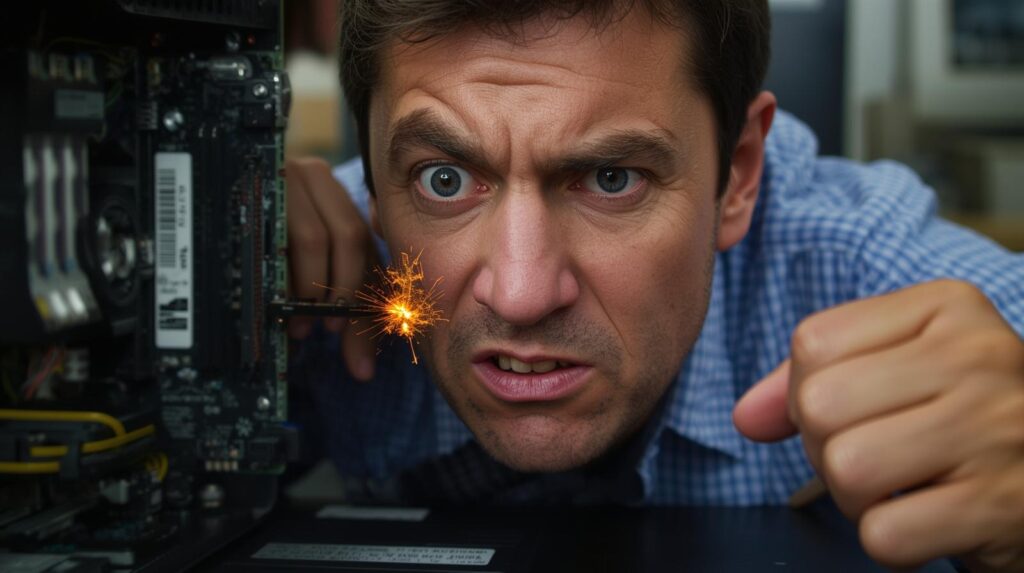
If your PC won’t boot or keeps restarting, follow this short checklist before you panic.
When to power off immediately
- Smell burning or see smoke from inside the case.
- Hear unusual popping or sizzling sounds.
- Notice swollen capacitors or black scorch marks.
- See sparks near the power connector or GPU.
If any of these happen, shut down instantly and unplug from the wall.
When you can run quick tests
- System powers on but no display shows.
- You experience random restarts or BSOD (blue screen of death).
- Mouse, keyboard, or drives not recognized.
- Fans spin but PC never loads BIOS screen.
These can often be diagnosed safely without damage.
Symptoms & What They Typically Mean
Each symptom tells a story about what’s failing inside your PC. Here’s how to decode common motherboard failure signs and understand what they really indicate.
No power or won’t boot likely PSU or motherboard traces blown
If your computer shows no lights or fan movement, either the power supply has failed or the motherboard’s power circuits are damaged. Test your PSU using the paperclip method or a dedicated PSU tester. If voltage checks fine but the board stays dead, internal traces or VRMs might be burnt.
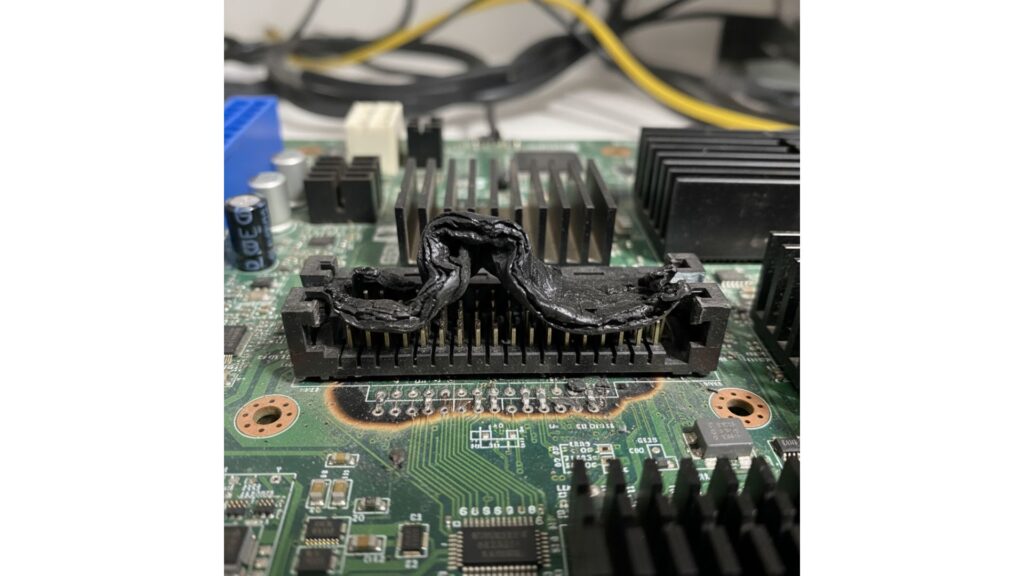
BSOD or frequent crashes possible memory, driver, or motherboard failure
A faulty motherboard often causes random BSODs during light or idle usage. This happens when RAM slots, memory controllers, or chipset lines fail. Try reseating the RAM or running MemTest86 overnight. Consistent errors at the same address indicate board-level damage, not just bad RAM.
Random shutdowns power delivery or overheating issues
If your PC powers off suddenly, the cause might be a short circuit, faulty capacitor, or overheating MOSFETs. Use HWMonitor or BIOS hardware monitor to check if CPU or motherboard temperatures exceed 90°C.
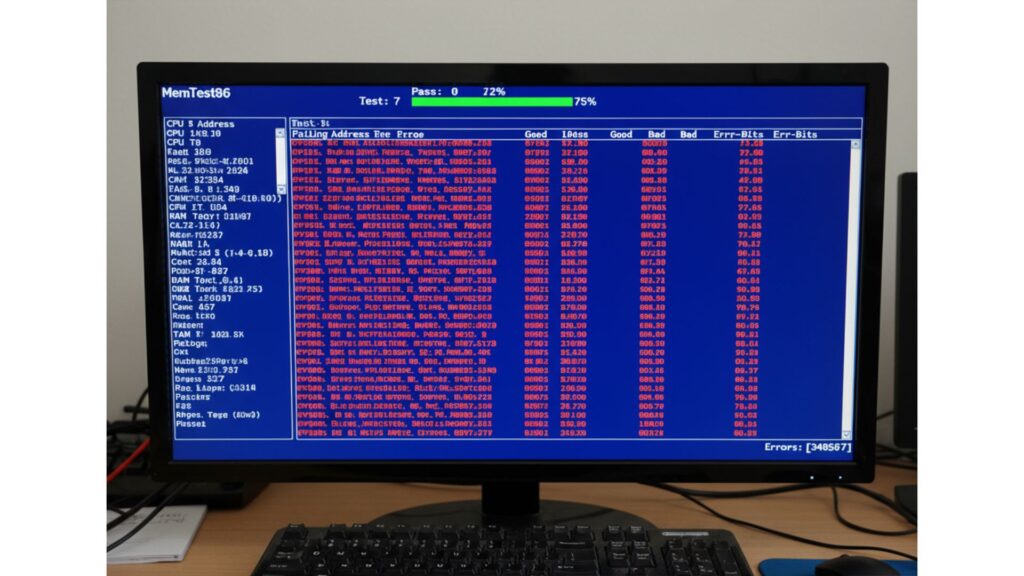
Hardware not recognized bus or controller failure
When your graphics card, USB devices, or storage drives vanish randomly, the culprit could be the chipset or PCIe lanes. This is common in older boards that have sustained power surges or corrosion. Testing the same components on another motherboard can confirm it.
Strange noises or burning smell immediate shutdown and inspection
Any electrical smell, smoke, or faint popping means stop instantly. A small short can quickly escalate into complete board destruction. Never keep the system running if you suspect a burning smell.

Step-by-Step Diagnostic Flow (with expected results)
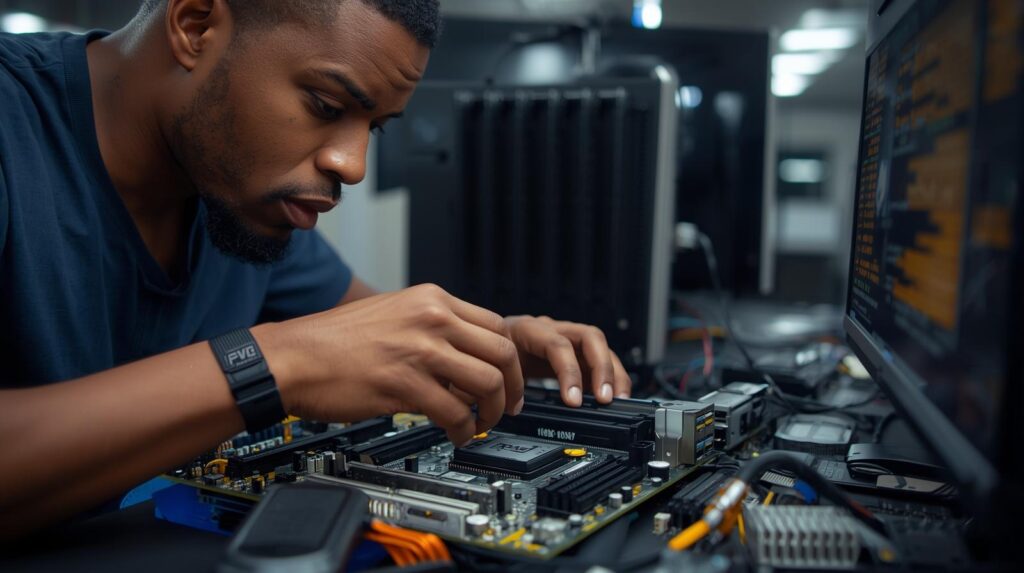
Once you’ve noted the symptoms, follow these step-by-step checks to confirm the cause. Each test includes what normal and faulty results should look like.
Step 1 PSU checks and safe swap test
Start with the power supply. Unplug everything, then test the PSU separately using a PSU tester or multimeter. A healthy PSU should show stable 12V, 5V, and 3.3V outputs. If voltages fluctuate heavily, replace it before blaming the motherboard.
You can also swap with a known-good PSU to confirm. If the system still fails to power on, move to the next step.
Step 2 RAM & GPU reseat + MemTest86 (how-to and expected output)
Power off and remove RAM sticks. Clean contacts gently using a microfiber cloth. Insert one stick at a time and try to boot. If the system starts with one but not the other, test both using MemTest86.
- Expected normal result: 0 errors after multiple passes.
- Expected fault result: Repeated memory errors or freezes, often signaling motherboard slot failure.

Step 3 BIOS/CMOS tests and POST/beep code table
Clear CMOS by removing the battery for 10 minutes. Then power on. Listen carefully for beeps from your system speaker. Here’s a quick reference table:
| Motherboard Brand | Beep Pattern | Meaning |
| ASUS | 1 long, 2 short | GPU or memory failure |
| MSI | 3 long beeps | RAM not detected |
| Gigabyte | Continuous short beeps | Power or short circuit issue |
| ASRock | 5 short beeps | CPU or VRM failure |
If you get no beeps at all, your motherboard might not be reaching POST stage.
Step 4 Visual inspection and how to photograph damage for repair shops
Remove the motherboard carefully and inspect it under bright light. Look for:
- Bulging or leaking capacitors
- Scorch marks around VRMs
- Broken fan headers or pins
- Corrosion near the battery socket
Take clear photos (top-down and angled) before sending for service. It helps technicians quote accurately.
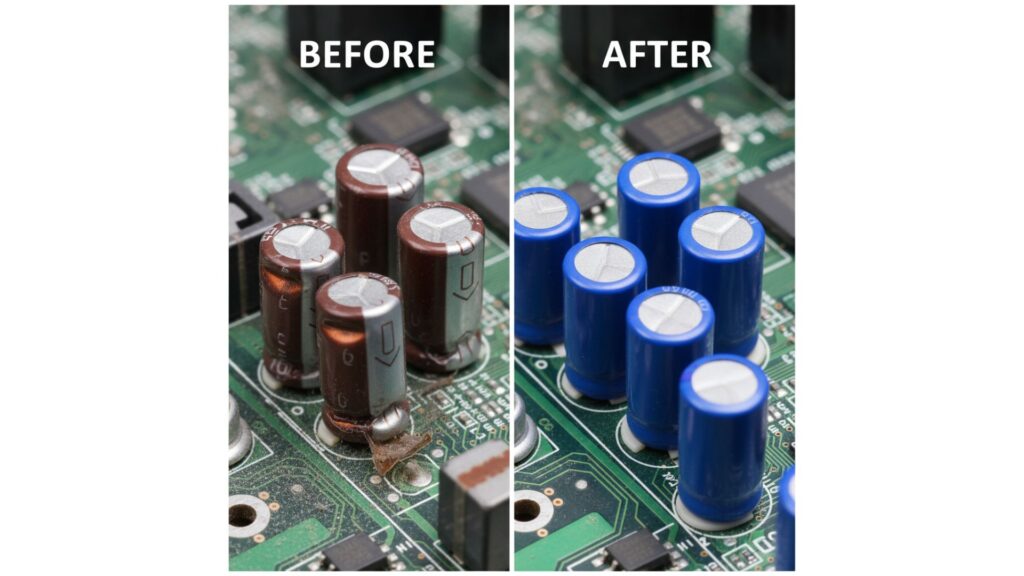
Repair vs Replace (decision matrix and typical cost ranges)
After identifying the issue, the next step is deciding whether repair or replacement makes sense. This section breaks down both options with realistic cost examples.
When repair is feasible (capacitor replacement and minor fixes)
If damage is limited to a few capacitors or power regulators, repair costs stay low.
Typical repair costs (2025 estimates):
- Capacitor replacement: $30–$60
- VRM rebuild or short fix: $70–$120
- BIOS chip reprogramming: $40–$80
Repairs are worth it for midrange boards or older PCs where full replacement isn’t justified.
When replacement is recommended (severe PCB damage)
If your motherboard has multiple burnt areas, broken layers, or shorted power planes, replacement is better. New boards range from $90 for entry-level to $400+ for high-end gaming or workstation types.
When combined with other failed components, replacing the entire setup may cost less long-term.
Prevention & Maintenance (practical schedule and checklist)
A few small habits can prevent most motherboard failures:
- Keep dust filters clean and fans unobstructed.
- Avoid cheap or unbranded power supplies.
- Use surge protectors or UPS units to prevent voltage spikes.
- Update BIOS occasionally but only from trusted sources.
- Don’t overload USB ports with unpowered devices.
- Run a full visual inspection every 6 months.
Set a reminder to clean and check connectors once a year.
Case Studies
Real-world cases often reveal how small issues turn into major failures. These short examples show how technicians diagnosed and fixed real motherboard problems.
Case Study 1: The Office PC That Randomly Shut Down
Ali’s office computer kept shutting off without warning. He replaced the PSU but the issue persisted. On inspection, swollen capacitors near the CPU socket were visible. A quick capacitor replacement for $50 fixed it permanently within two days.
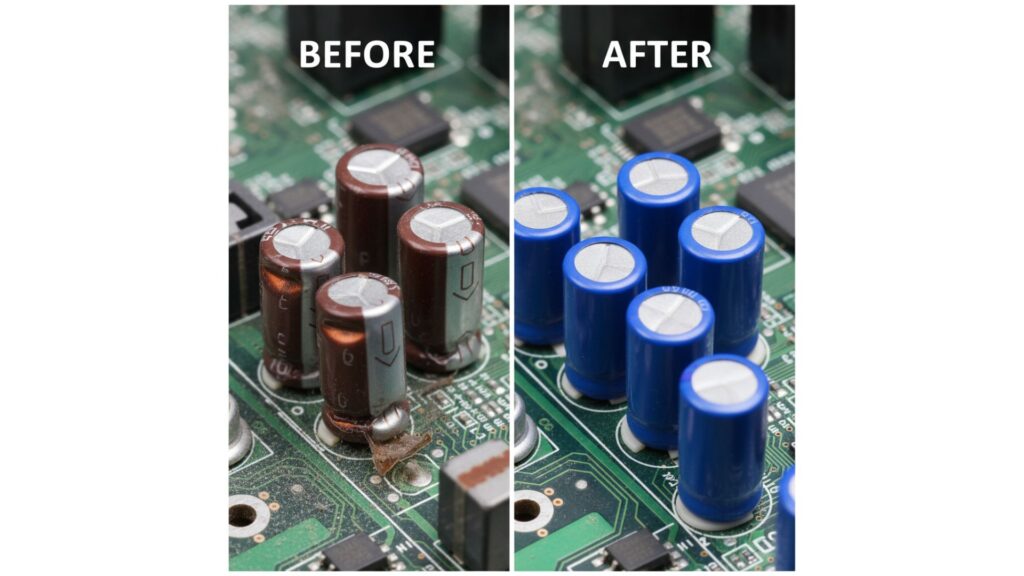
Case Study 2: Gaming Rig with Endless BSODs
Sara’s gaming PC crashed every hour with BSODs despite multiple Windows reinstalls. MemTest86 showed errors across all RAM slots. Technician confirmed a faulty memory controller on the motherboard. Replacing the board for $180 solved it instantly.
What To Do Next
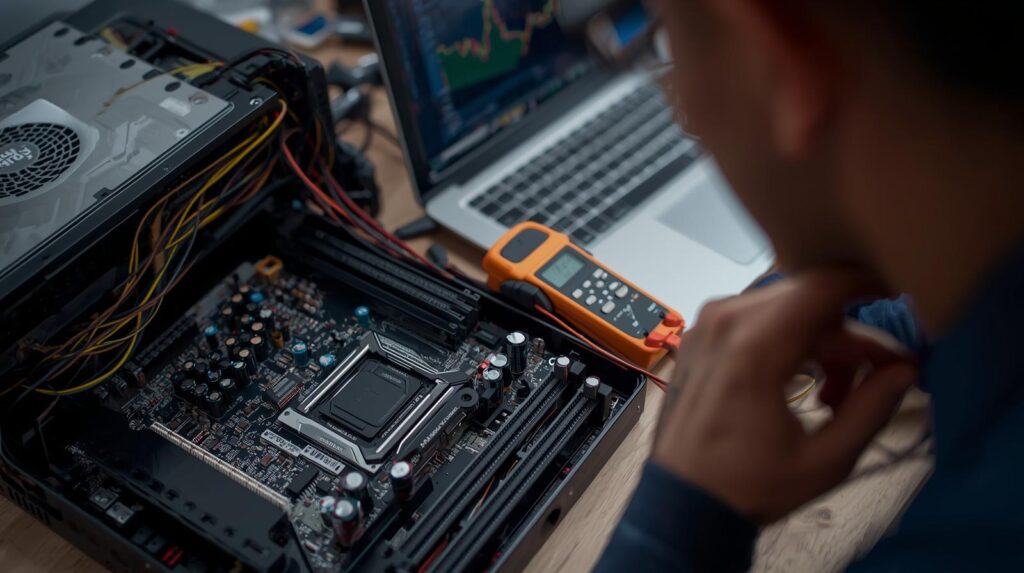
Understanding computer motherboard failure symptoms can save you from expensive mistakes. When you notice boot failures, BSODs, or random shutdowns, follow the diagnostic steps above calmly. Test the PSU, run MemTest86, and inspect for swollen capacitors or burning smell. If issues persist, get a professional diagnosis instead of guessing. A little patience and methodical testing can bring your system back to life. Book a motherboard diagnostic or order verified replacement parts from trusted vendors today.
If you want to explore more guides and detailed comparisons on motherboards, check out our Complete Motherboard Guide | Types, Features, and Setup for PC Builders.
FAQs
How much does it usually cost to repair a faulty motherboard?
Most minor repairs like replacing capacitors or reprogramming BIOS chips cost between $40 and $120. Severe PCB or chipset issues usually require full replacement, which may cost $100–$400 depending on model and features.
How long does a motherboard diagnostic take?
Basic testing takes about one hour. Complete diagnosis including PSU, RAM, and thermal checks may take up to 24 hours, especially if technicians need to observe the system over time.
Can a computer run with a partially faulty motherboard?
Sometimes yes. Systems may boot but behave inconsistently, with ports or slots failing. However, continued use risks further component damage, so it’s not recommended for long.
Is it safe to test a motherboard at home?
Yes, if you follow basic precautions like unplugging power, using antistatic gear, and avoiding metal tools near circuitry. Avoid powering on a board that smells burnt or shows physical damage.
Why do motherboards fail even in new PCs?
Factory defects, unstable electricity, or poor cooling can cause premature failure. Cheap PSUs are one of the biggest hidden reasons, as they send unstable voltage over time.
Should I repair or replace an old motherboard?
If the board is over five years old or replacement parts are scarce, replacement is usually smarter. Repairs may not restore full reliability for aging hardware.
Can overheating cause permanent motherboard damage?
Yes. Overheating damages voltage regulators and nearby capacitors. Regular cleaning and thermal paste maintenance reduce this risk.
Where can I find reliable technicians for motherboard repair?
Check certified local computer repair centers or online technician directories. Always verify reviews, certifications, and warranty terms before handing over your board.

